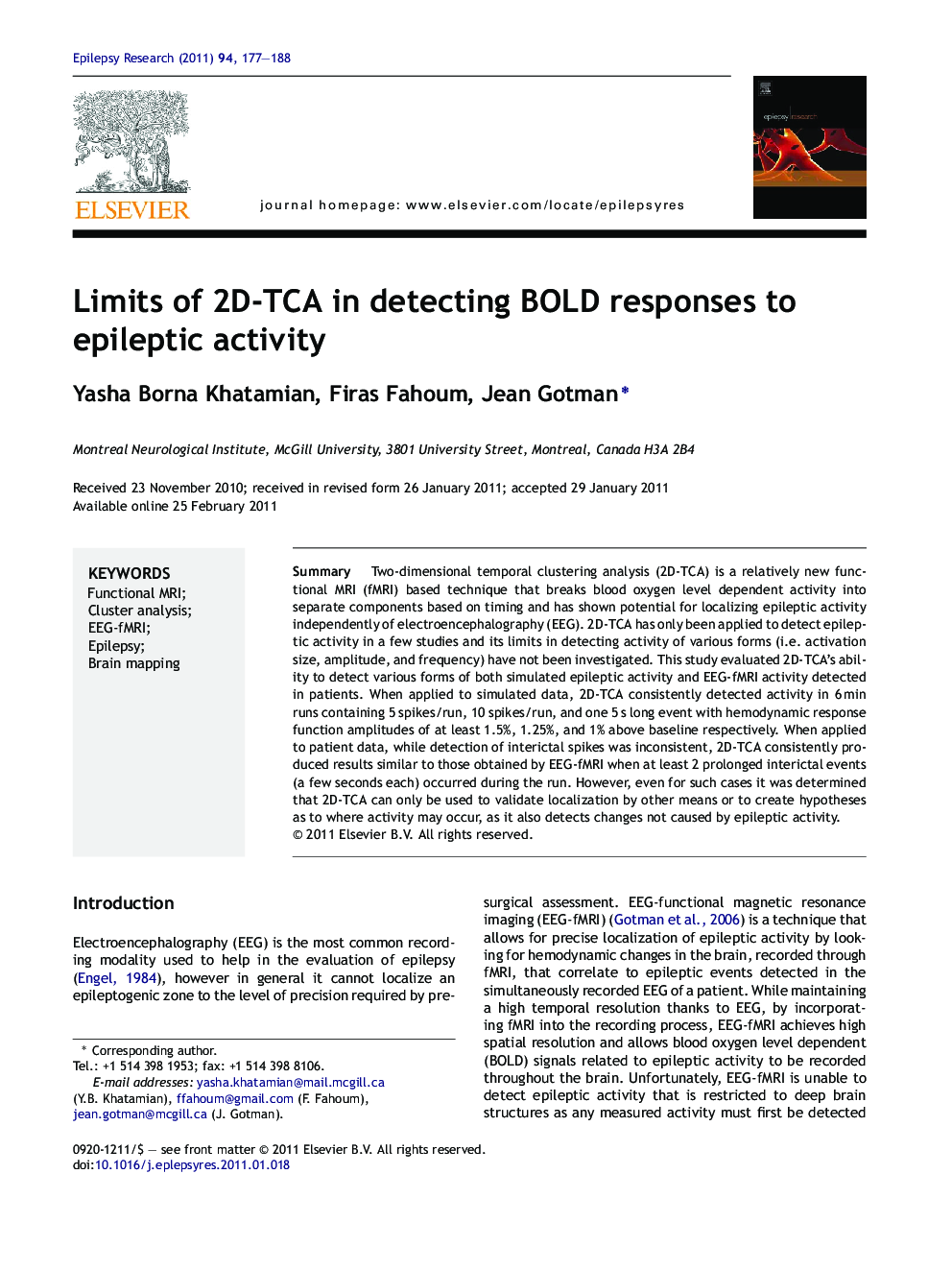| کد مقاله | کد نشریه | سال انتشار | مقاله انگلیسی | نسخه تمام متن |
|---|---|---|---|---|
| 3052464 | 1186108 | 2011 | 12 صفحه PDF | دانلود رایگان |
عنوان انگلیسی مقاله ISI
Limits of 2D-TCA in detecting BOLD responses to epileptic activity
دانلود مقاله + سفارش ترجمه
دانلود مقاله ISI انگلیسی
رایگان برای ایرانیان
کلمات کلیدی
موضوعات مرتبط
علوم زیستی و بیوفناوری
علم عصب شناسی
عصب شناسی
پیش نمایش صفحه اول مقاله

چکیده انگلیسی
Two-dimensional temporal clustering analysis (2D-TCA) is a relatively new functional MRI (fMRI) based technique that breaks blood oxygen level dependent activity into separate components based on timing and has shown potential for localizing epileptic activity independently of electroencephalography (EEG). 2D-TCA has only been applied to detect epileptic activity in a few studies and its limits in detecting activity of various forms (i.e. activation size, amplitude, and frequency) have not been investigated. This study evaluated 2D-TCA's ability to detect various forms of both simulated epileptic activity and EEG-fMRI activity detected in patients. When applied to simulated data, 2D-TCA consistently detected activity in 6Â min runs containing 5 spikes/run, 10 spikes/run, and one 5Â s long event with hemodynamic response function amplitudes of at least 1.5%, 1.25%, and 1% above baseline respectively. When applied to patient data, while detection of interictal spikes was inconsistent, 2D-TCA consistently produced results similar to those obtained by EEG-fMRI when at least 2 prolonged interictal events (a few seconds each) occurred during the run. However, even for such cases it was determined that 2D-TCA can only be used to validate localization by other means or to create hypotheses as to where activity may occur, as it also detects changes not caused by epileptic activity.
ناشر
Database: Elsevier - ScienceDirect (ساینس دایرکت)
Journal: Epilepsy Research - Volume 94, Issue 3, May 2011, Pages 177-188
Journal: Epilepsy Research - Volume 94, Issue 3, May 2011, Pages 177-188
نویسندگان
Yasha Borna Khatamian, Firas Fahoum, Jean Gotman,